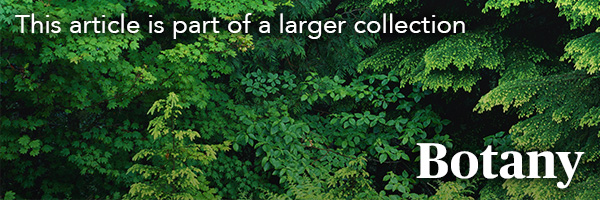Carnivorous plants are plants which derive nutrients by trapping, killing and digesting animals, typically invertebrates. Carnivory in plants has evolved independently multiple times in at least six different plant orders. Over 800 species of carnivorous plants have been identified worldwide, 20 of which occur in Canada. These plants can be categorized by their prey capture mechanisms: sticky traps, pitfall traps, snap traps, suction traps and eel traps; and can be either active or passive.
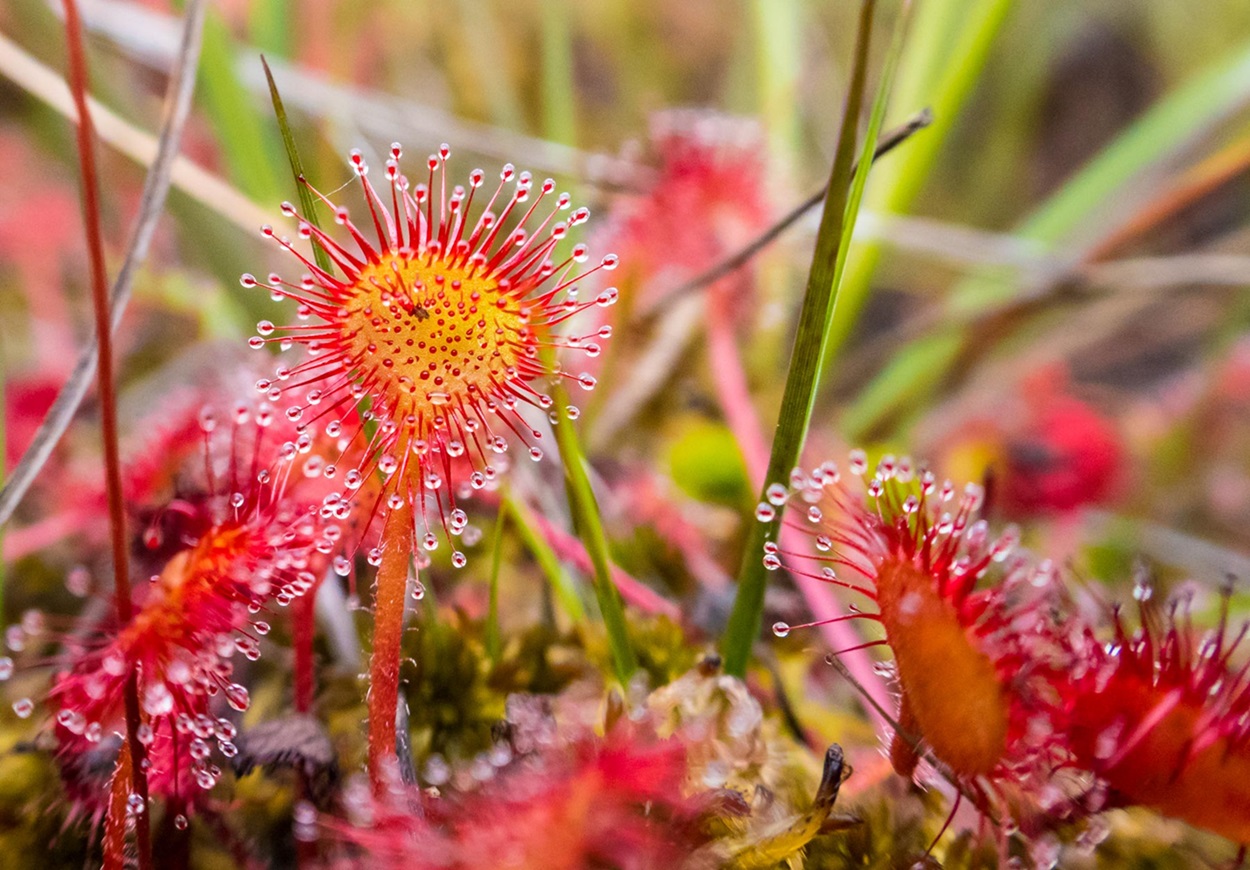
Why Carnivory?
Carnivory allows plants to survive in low-nutrient environments such as acidic bogs, fens, flowing freshwater or on rocky outcrops with little soil. By breaking down prey with specialized digestive enzymes, these plants are able to absorb essential nutrients such as nitrogen and phosphorus while still relying on photosynthesis to produce their energy.
Did you know?
Many carnivorous plants also rely on insects to pollinate their flowers, which can create a conflict between the plant’s need to capture prey and its need to reproduce. Some species, such as certain pitcher plants, resolve this by producing their flowers and insect-capturing structures at different times. Other species, like sundews, grow their flowers on very long stems, keeping them separate from their traps.
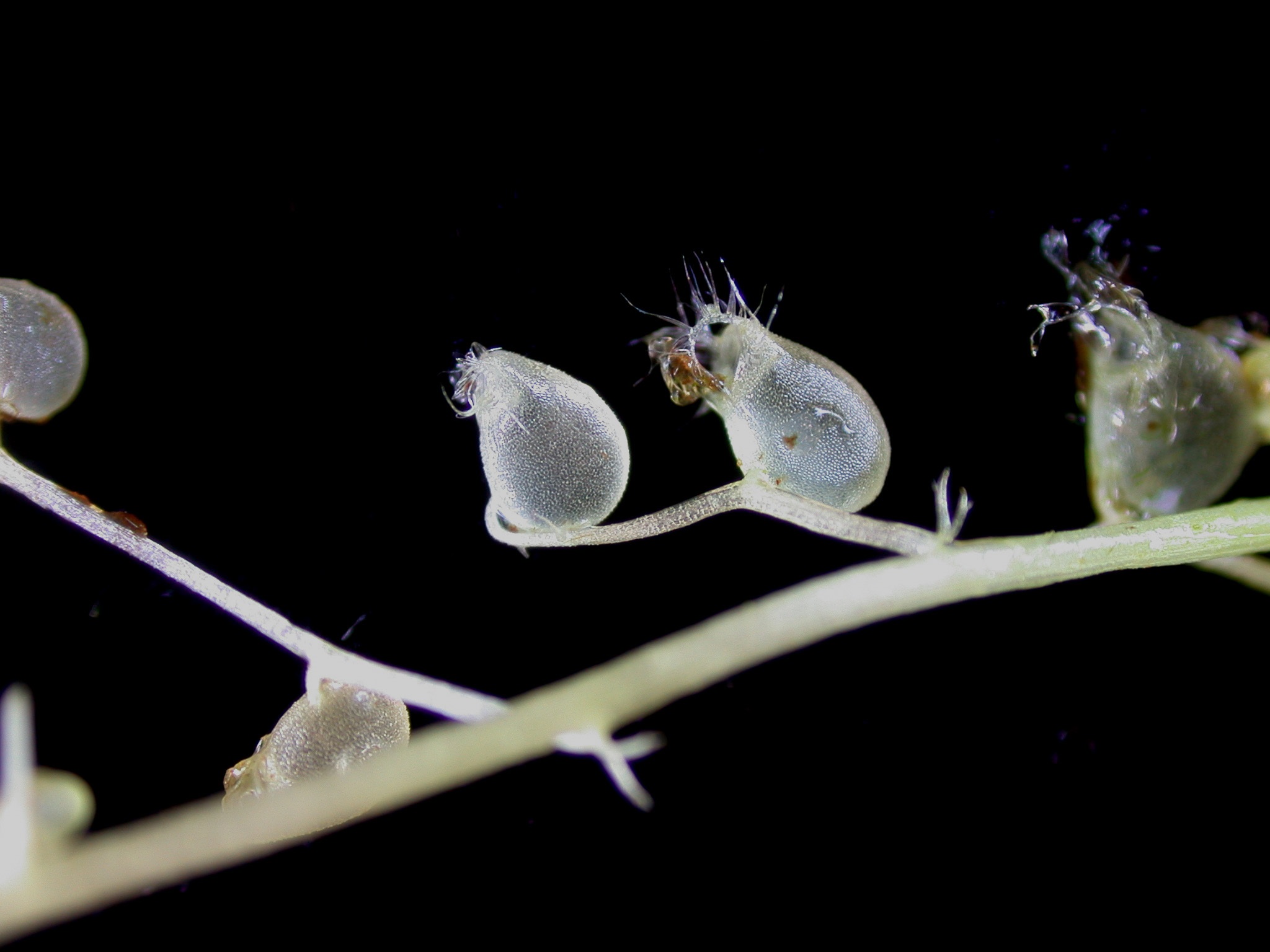
Sticky traps: Sundews, Butterworts and False Asphodel
Sticky traps, also known as adhesive traps, use sticky mucilage to attract, trap and digest prey. In Canada, there are three different types of carnivorous plants that are known to use sticky traps: sundews, butterworts and the western false asphodel.
Sundews (genus Drosera)
The leaves of sundews have long, specialized hairs called tentacles, each of which is tipped with a mucilaginous droplet resembling dew. When the prey gets stuck on a droplet and begins to struggle, it triggers the leaf to curl around the prey, putting it in contact with even more glue and trapping it further. The leaf then secretes enzymes to digest the arthropod, allowing the plant to absorb its nutrients.
There are five species of sundew in Canada:
- Round-leaved sundew (Drosera rotundifolia).
- Spoonleaf sundew (Drosera intermedia).
- Great sundew (Drosera anglica).
- Slenderleaf sundew (Drosera linearis).
- Thread-leaved sundew (Drosera filiformis).
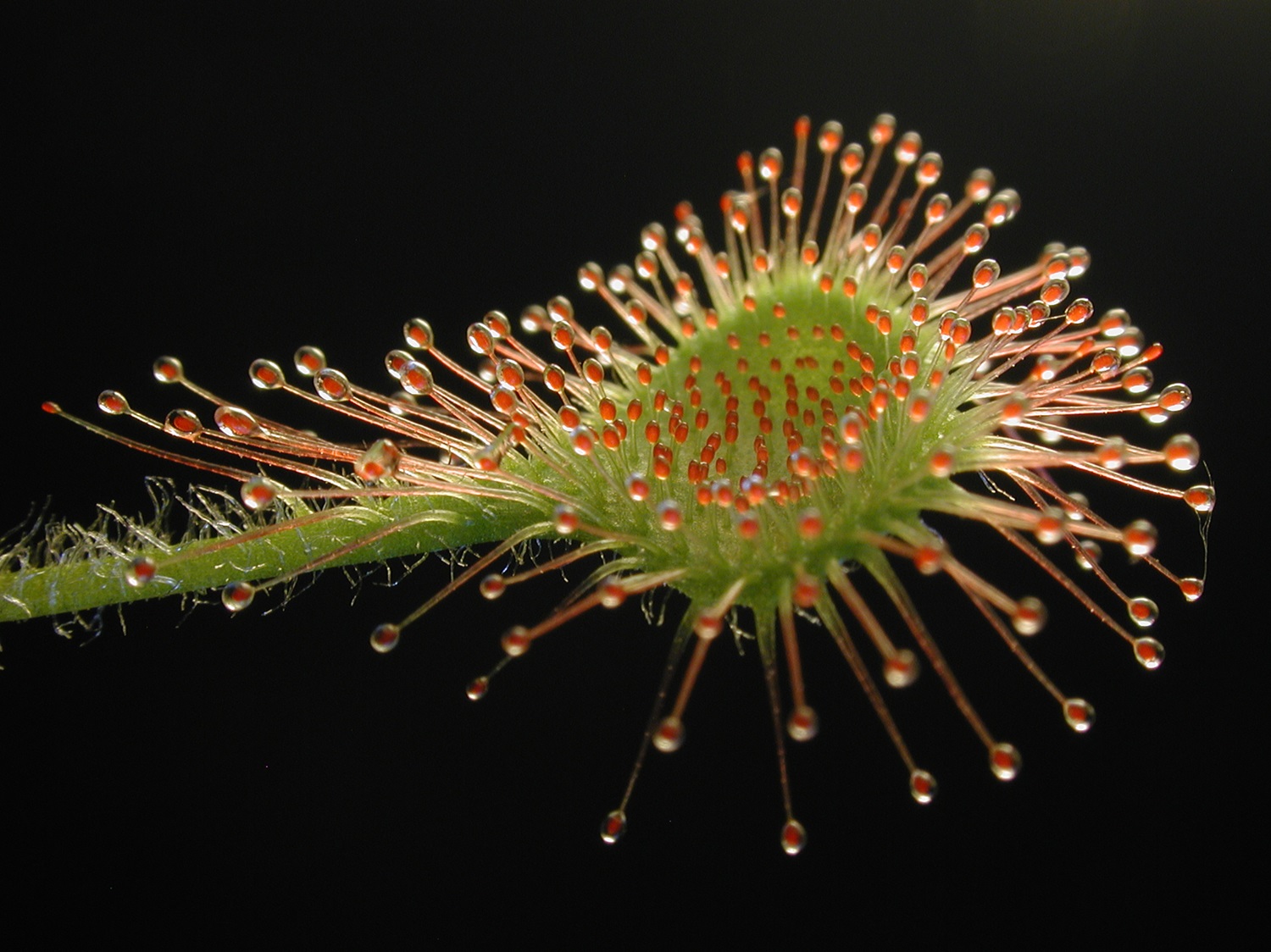
Butterworts (genus Pinguicula)
Butterworts have simple, fleshy leaves that grow in a basal rosette. The inner surface of these leaves is shiny and feels greasy to the touch, which is why they are called “butterwort.” When small insects land on the leaves, they get stuck to the glue that tips the short hairs covering its surface. The leaf will then slowly curl around the trapped insect, preventing escape and aiding digestion.
Three species of butterwort are found in Canada:
- Common butterwort (Pinguicula vulgaris).
- Horned butterwort (Pinguicula macroceras).
- Hairy butterwort (Pinguicula villosa).
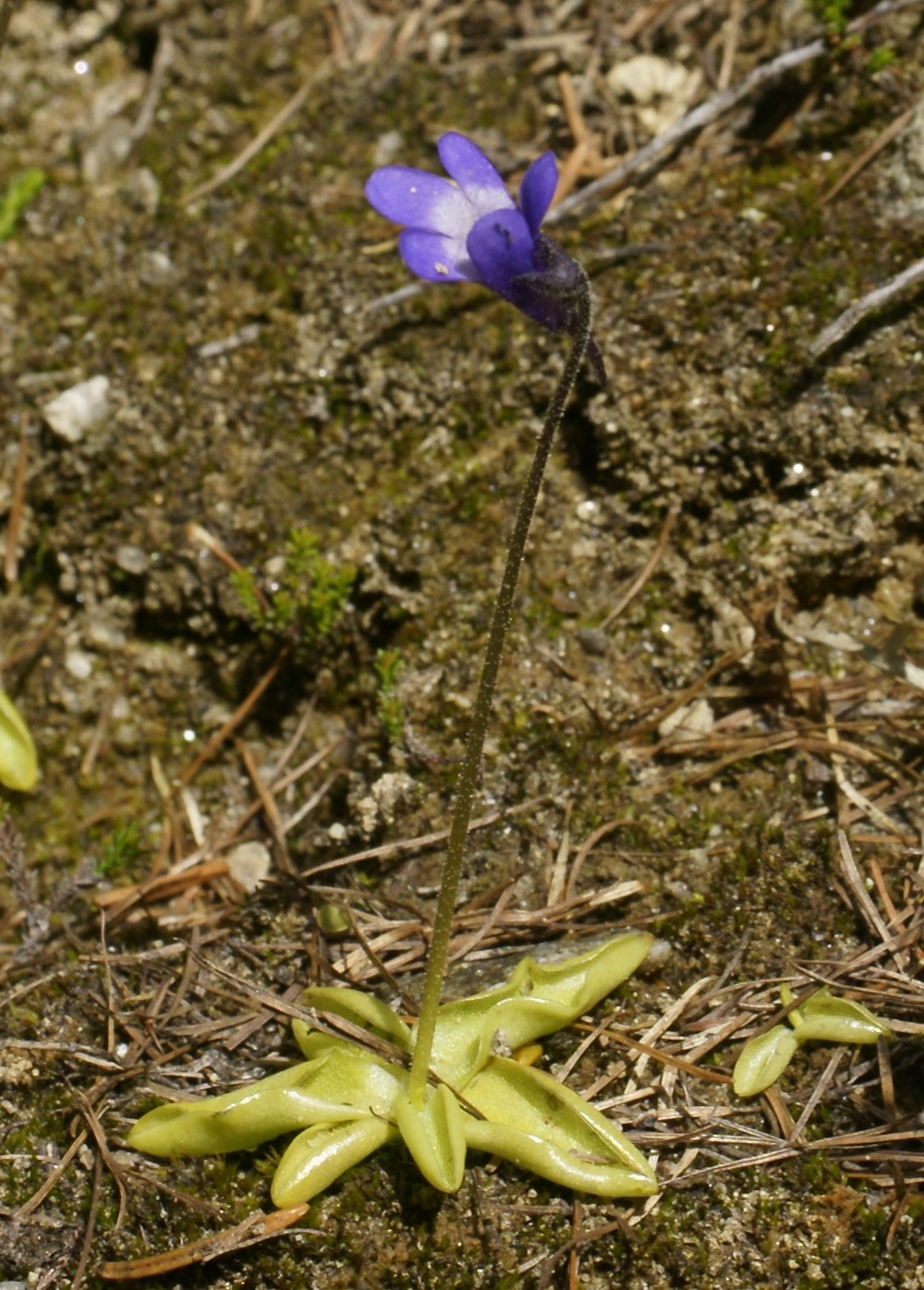
Western False Asphodel (Triantha occidentalis)
The western false asphodel, a recent addition to Canada’s carnivorous flora, was discovered to be carnivorous by a team of scientists from the University of British Columbia and the University of Wisconsin-Madison in a paper published in 2021. This species grows in bogs and uses sticky glandular hairs on its long flowering stem to trap very small insects, like midges. Unusually, the flowers of this species grow close to the traps, situated on the same stalk.
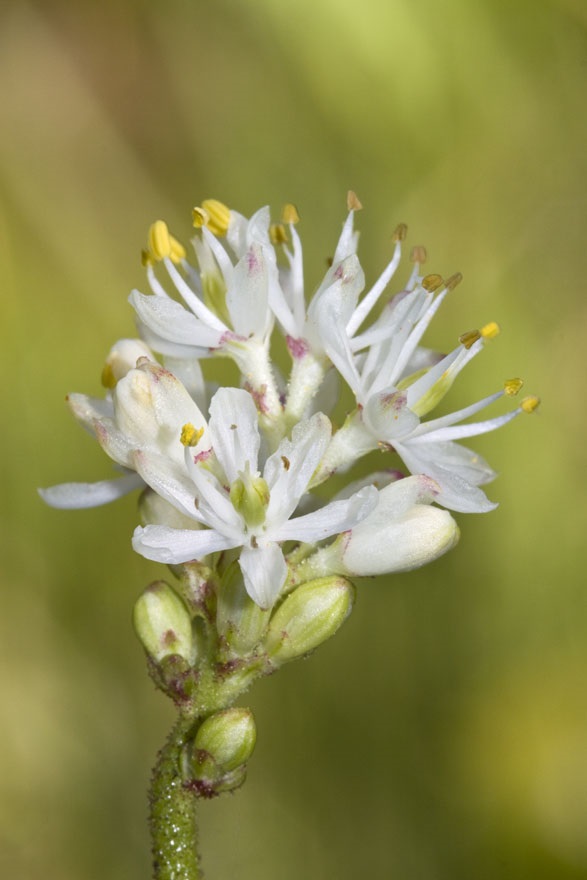
Pitfall traps: Purple Pitcher Plant
Pitfall traps consist of leaves that form a tubular chamber containing a pool of digestive liquid. Prey fall into this chamber and are digested.
The purple pitcher plant (Sarracenia purpurea) is the only pitcher plant in Canada and is the provincial flower of Newfoundland and Labrador. Its pitcher-shaped leaves secrete a sweet nectar that attracts insects to the rim, or peristome, of the trap. Once an insect lands, the slippery surface makes it easy for it to slip and fall into the pitcher. The inside surface of the pitcher is smooth and lined with downward-facing hairs that prevent escape, and the bottom of the trap contains a combination of rainwater, digestive enzymes and symbiotic bacteria that break down the prey, allowing the plant to absorb its nutrients. Purple pitcher plants are also known to create complex microhabitats within their pitchers. Many species of invertebrates, fungi and algae are able to live happily inside the pitcher trap, and, in some cases, rely on them completely in a symbiotic relationship.
The flowers of the purple pitcher plant are large, nodding and reddish-purple and green.
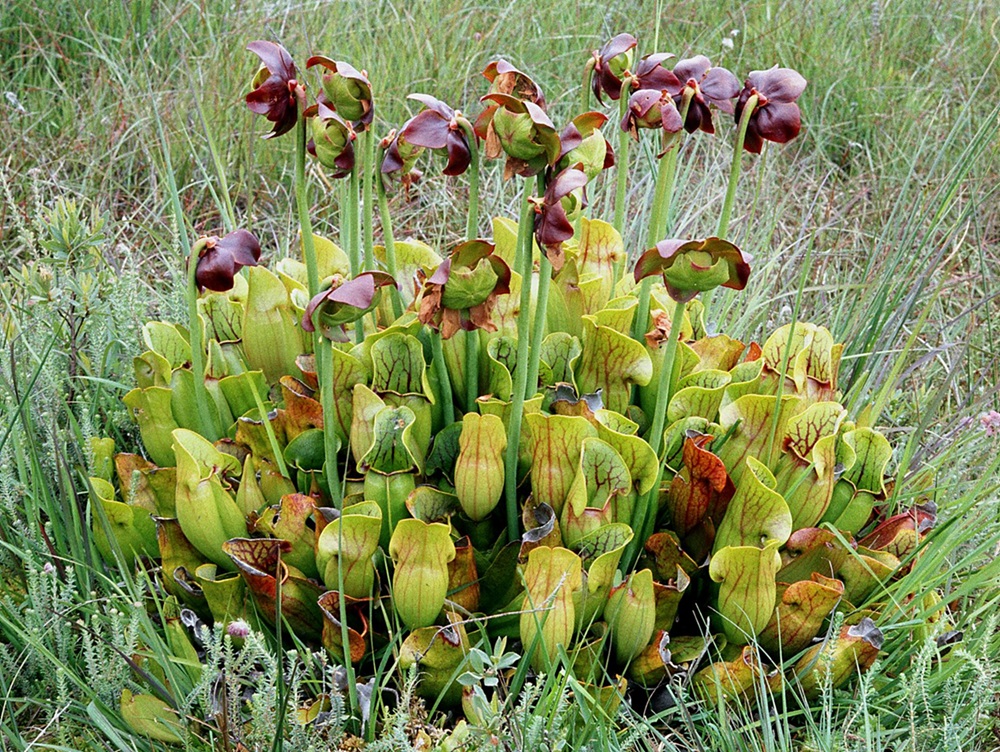
Suction traps: Bladderworts (genus Utricularia)
Suction traps, also known as bladder traps, are unique to plants in the genus Utricularia, or bladderworts. These specialized traps are shaped like small bags with a trap door on one end that is surrounded by trigger hairs. The trap door creates a watertight seal, and the plant pumps water out from inside the bags, creating negative pressure within the trap. When the trigger hair is touched by unsuspecting prey, the trap door springs open, sucking in the animal and surrounding water. This can happen in less than a millisecond and is one of the fastest plant movements known.
Some species of bladderwort live in nutrient-poor water, while others are terrestrial, keeping their specialized traps underground in waterlogged soil. Though bladderworts lack true roots, terrestrial species have root-like stems that they use to anchor themselves in the soil.
Bladderworts are the most diverse group of carnivorous plants in Canada, with 11 known species identified. The most common of these include:
- Common bladderwort (Utricularia macrorhiza)
- Horned bladderwort (Utricularia cornuta)
- Intermediate bladderwort (Utricularia intermedia)
- Purple bladderwort (Utricularia purpurea)
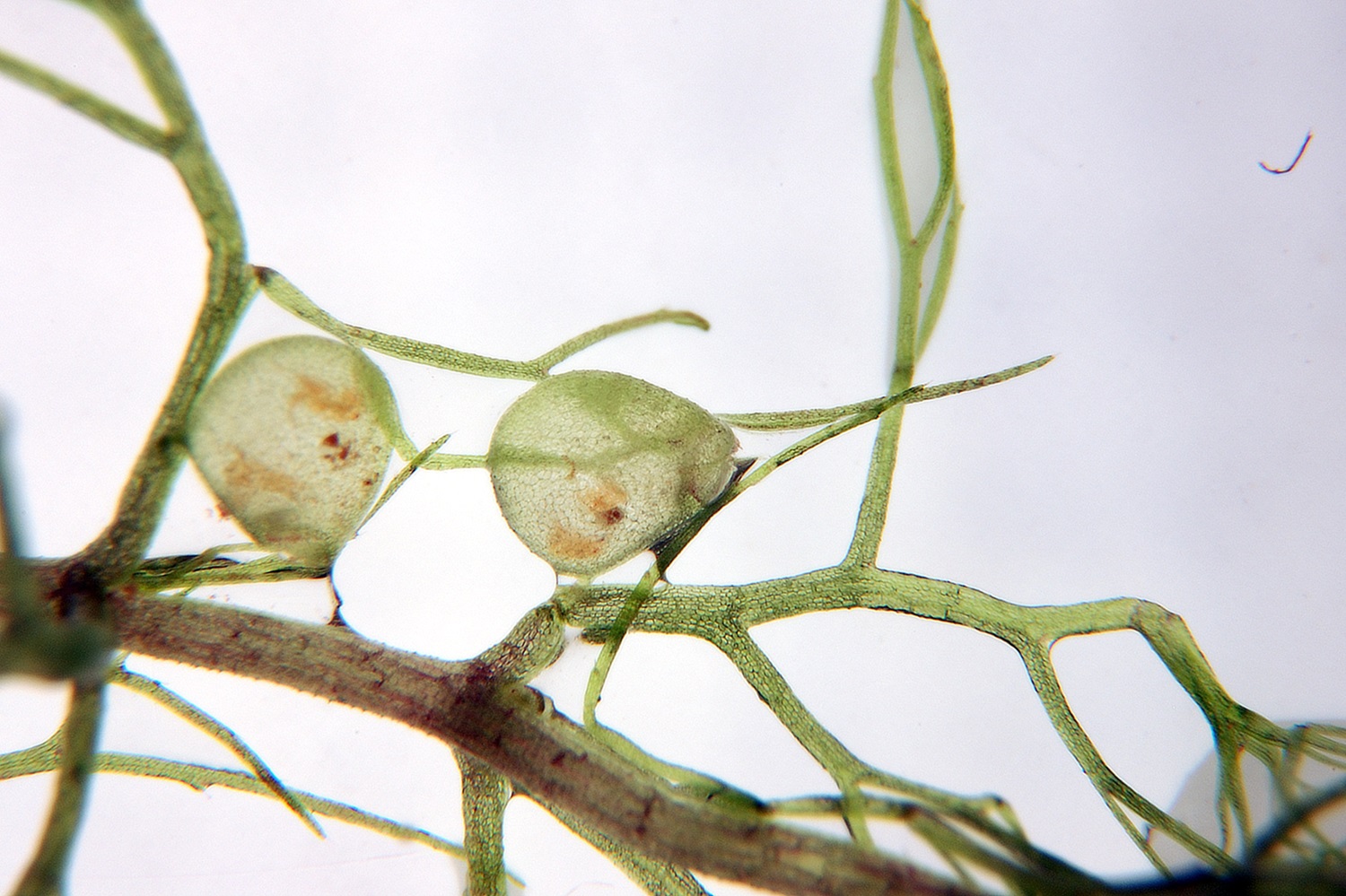
Climate Change and Conservation
The carnivorous plants found in Canada represent only a small portion of the diversity worldwide. Most species of carnivorous plants are found in tropical regions, and as climate change progresses, more species may extend their range northward into Canada.
Conservation of carnivorous plants is complex, as many species are highly specialized to their habitats, and can have very restricted ranges. Because of this, habitat loss, or alteration due to climate change, has the potential to wipe out entire species. Thus, conservation efforts in Canada will need to focus on protecting their natural habitats, especially wetlands, where many of them thrive.
Did you know?
One species of sundew, the thread-leaved sundew, is listed as endangered by the Committee on the Status of Endangered Wildlife in Canada (COSEWIC).


 Share on Facebook
Share on Facebook Share on X
Share on X Share by Email
Share by Email Share on Google Classroom
Share on Google Classroom
